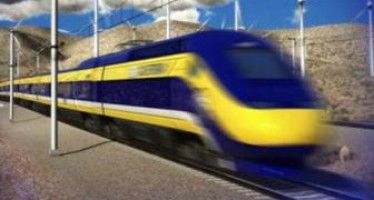Scientist says no reason to shut down San Onofre nuke plant

 Can the San Onofre Nuclear Generating Station, whose decommissioning was announced last June, be salvaged? Cal-Tech trained geochemist and nuclear waste expert James Conca in Forbes.com says it can.
Can the San Onofre Nuclear Generating Station, whose decommissioning was announced last June, be salvaged? Cal-Tech trained geochemist and nuclear waste expert James Conca in Forbes.com says it can.
Conca makes a case that Southern California electric ratepayers should not need to pick up the $830 million net cost of permanently closing the power plant because there is no sound reason for decommissioning it.
But it will be difficult bringing back to life a plant whose remaining two reactors were shut down in January 2012 and never restarted.
U-T San Diego reported on Dec. 25 that the the plant’s majority owner, Southern California Edison, in 2013 was “cited by nuclear safety regulators for failing to properly check the design of faulty replacement steam generators that disabled the plant.” The Nuclear Regulatory Commission determined that “design control measures were not established to provide for verifying and checking the adequacy of certain designs.”
However, the NRC did not issue any fines or penalties. And these actions don’t reduce the impact on Edison’s electricity ratepayers who are being told they have to pick up the tab for decommissioning the plant.
Simple solution
But Conca says there is a simple alternative:
“[A]ll we had to do was decrease one reactor’s output by 20 percent to solve the problem, which would have dropped total output of SONGS (San Onofre Nuclear Generating Station) by only 8 percent.”
Conca states the scientific reason that San Onofre was decommissioned had to do with a manufacturing feature of its steam tubes that resulted in vibrations that caused a perfect harmonic pitch at 100 percent steam flow. A few hundred of the steam tubes out of 10,000 vibrated enough to cause contact and one tube failing.
There was no radiation or other safety issue, despite reports to the contrary by the media and rumors on the blogosphere, he said. The San Onofre malfunction was not anything like Fukushima, the 2011 nuclear disaster following a 9.0 Richter earthquake in Japan.
Re-Starting San Onofre would avoid costs, improve environment
Of the $4.1 billion total cost to decommission San Onofre Units 2 and 3, Edison’s share is $3 billion. Of that $4.1 billion total cost, $3.27 billion has already been collected in a decommissioning fund paid through customers’ electricity bills. That leaves about $830 million in decommissioning costs that still need to be paid by customers. Edison owns about 78 percent of the plant, San Diego Gas and Electric 20 percent, and the City of Riverside Utilities Department 2 percent.
Fortunately for Californians, the 18 million extra tons of carbon dioxide emitted from gas-fired power plants providing replacement power for the loss of San Onofre come mainly from out-of-state providers. So while total air pollution has increased in the United States from San Onofre being shut down, in Southern California the amount of air pollution is about the same. Nonetheless, 1,500 local jobs and $50 million spent in the local economy have been lost to Southern California each year (see here and here).
The average production cost for nuclear power in 2012 was 2.4 cents per kilowatt hour, not including transmission, distribution and other costs. This was about one-third the cost of a gas-fired power plant, one-fourth of the cost of wind energy, and 1/17th the cost of centralized solar energy. And nuclear power is clean power.
So far, at least, low natural gas prices have bailed out Southern California from having to face electricity rate shock, as happened during the 2000-01 electricity crisis.
Anti-science culture
Conca blames an “anti-science culture” and political activism for not considering the re-start of the San Onofre Power Plant:
“But such a simple and obvious solution as running at the correct output was not acceptable. In fact, nuclear scientists and engineers were shouted down so fast and so loud by politicos, you’d have thought it was the Salem Witch Trials of 1692. … It’s shameful that reasonable scientific and engineering fixes are no longer desired for addressing scientific problems. … It’s as though once the U.S. became the undisputed leader of the world, we suddenly had the luxury of being stupid. But it’s dangerous to assume we are immune to the long-term effects of dismissing the scientific and technological foundations that got us here in favor of fairy tales and ideologies.”
Regulators
Going along with the San Onofre shutdown have been Gov. Jerry Brown and CPUC President Michael Peevey.
Peevey is a former president of SCE and its parent company, Edison International. He said, “The company’s decision, given the uncertainty it faces with the inaction of the Nuclear Regulatory Commission and the large economic impact of the non-operation of the two units, is understandable.”
Conca concluded, “The scientific community has lots of solutions to lots of our problems. We just aren’t allowed to discuss them very much if they offend one group or another, so the whole country suffers.”
Whether the regulators and politicians will listen to Conca and re-start San Onofre has yet to be decided.
Related Articles
Southern Califiornia’s new pact with the Delta water devil
July 30, 2012 By Wayne Lusvardi If you dine with the Sacramento Delta water devil, you better have a long
Micro-managed grid short-circuting CA market electricity
In Germany, merchant-energy companies are considering moving to other countries where they can make a profit. Such companies are
Bullet train: Judge shows taxpayers may be saved by Prop. 1A
The Friday ruling by a Sacramento judge that the California High-Speed Rail Authority was violating the 2008 state law providing




